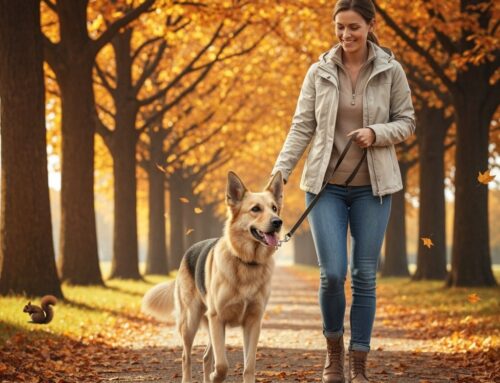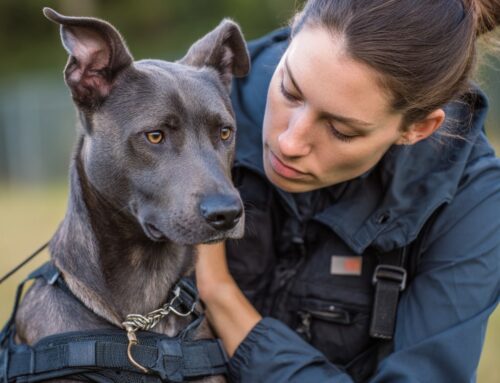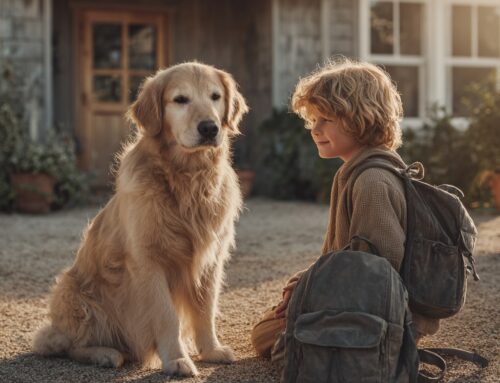Dogs, often dubbed as man’s best friend, have a wide range of behaviors that reflect their emotions and responses to their environment. While most dogs are friendly and well-behaved, there are instances where they may display aggression. Recognizing and addressing aggressive behavior in dogs is crucial for ensuring the safety of both the dog and those around them. We’ll dive into the signs of a dog’s aggression, potential causes, and effective strategies for managing and modifying such behaviors.
Recognizing Aggressive Behavior in Dogs
Aggression in dogs can manifest in various ways, each with its own set of indicators. Understanding these warning signs in your dog’s behavior is the first step in addressing the issue.
Growling and Snarling
Growling is one of the most obvious signs of aggression in dogs. It serves as a warning signal, indicating that the dog is uncomfortable or feels threatened. Snarling, which involves growling combined with showing teeth, is an escalation that signifies the dog’s readiness to defend itself if necessary. These vocalizations should never be ignored, as they are clear indicators of a dog’s distress.
Excessive Barking
While barking is a normal form of communication for dogs, excessive and aggressive barking is a sign of potential aggression. This type of barking is usually loud, deep, and continuous, often accompanied by a stiff body posture and direct eye contact. It indicates that the dog perceives a threat and is attempting to ward it off.
Showing Teeth
A dog that curls its lips and exposes its teeth is displaying a classic sign of aggression. This behavior, known as “baring teeth,” is a warning that the dog is prepared to bite if the perceived threat does not retreat. It is a defensive mechanism used to intimidate and protect itself.

Stiff Body Posture
Aggressive dogs often exhibit a stiff and rigid body posture. This includes standing tall with their tail raised, ears up or back, and fur along the back standing up (known as piloerection). This posture signals that the dog is on high alert and ready to defend itself if necessary.
Lunging and Charging
Lunging and charging are severe forms of aggressive behavior. These actions indicate that the dog is not only feeling threatened but is also willing to attack. Such behaviors can be dangerous and should be addressed immediately.
Biting and Snapping
Biting is an overt act of aggression and is one of the most dangerous behaviors a dog can exhibit. Snapping, which involves biting without making contact, serves as a warning that the dog is on the verge of biting. Both can be potentially dangerous behaviors, which are serious and require prompt intervention.
Direct Stare
Dogs that are about to become aggressive may fixate their gaze on the object of their aggression. A direct, intense stare can be a precursor to an attack and should be taken seriously.
Raised Hackles
Raised hackles, or piloerection, occur when the fur along a dog’s back stands up. This is an involuntary response to stress or fear and indicates that the dog is feeling threatened and may become aggressive.
Ears Positioned Back or Forward
A dog’s ear position can provide insight into its emotional state. Ears laid flat against the head or pricked forward indicate heightened alertness and potential aggression. These ear positions suggest that the dog is highly focused on a perceived threat.
Tail Position
Contrary to the common belief that a wagging tail always signifies friendliness, a stiffly wagging tail held high or straight out can indicate aggression. This tail position, combined with other aggressive body language, signals that the dog is feeling threatened and is ready to act.
Causes of Dog aggression
Understanding the root causes of aggressive behavior in dogs is essential for addressing and modifying such aggressive behaviors. Several factors can contribute to a dog’s aggressive behavior.
Fear and Anxiety
Fear is one of the most common causes of aggression in dogs. A dog that feels threatened or cornered may resort to defensive aggression as a defense mechanism. Anxiety, often stemming from past traumatic experiences like another dogs bite, can also lead to aggressive behavior.
Territorial Aggression
Dogs are naturally territorial animals. They may become aggressive when they perceive an intruder in their space, whether it be another animal or a human. Territorial aggression is often observed when a dog is protecting its home, yard, or even a specific person.
Protective Aggression
Similar to territorial aggression, protective aggression occurs when a dog feels the need to protect its family members or other pets. This behavior is common in breeds that are naturally protective.
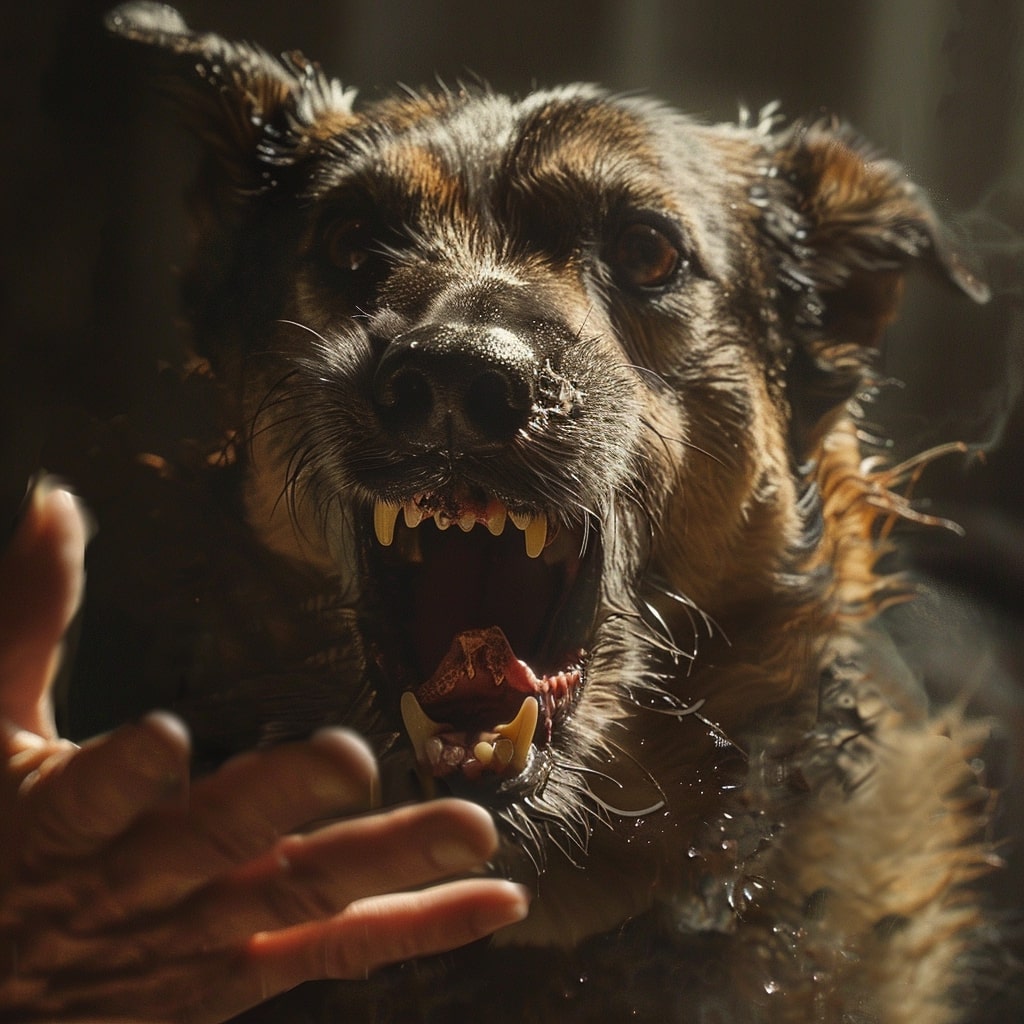
Possessive Aggression
Dogs can become aggressive when they feel possessive over resources such as food, toys, or even people. This type of aggression is often referred to as resource guarding.
Pain and Medical Conditions
Pain or underlying medical conditions can cause a dog to become aggressive. Dogs in pain may lash out to protect themselves from further discomfort. It’s important to rule out any medical issues if a previously non-aggressive dog suddenly starts showing signs of aggression.
Social Aggression
Social aggression occurs when a dog attempts to establish dominance over other dogs or humans. This behavior is often observed in multi-dog households where there is competition for resources or attention.
Managing and Modifying Aggressive Dog Behavior
Addressing aggressive behavior in dogs requires a multi-faceted approach that includes understanding the triggers, providing appropriate training, and seeking professional help when necessary.
Stay Calm and Avoid Direct Confrontation
When faced with an aggressive dog, it is crucial to remain calm. Yelling, making sudden movements, or physically confronting the dog can escalate the aggression. Instead, speak in a soothing tone and avoid direct eye contact, which can be perceived as a challenge.
Remove the Trigger
If possible, calmly remove whatever is causing the dog to feel threatened or aggressive. This might involve removing another animal from the vicinity, giving the dog space, redirected aggression or distracting the dog with a toy or treat.
Desensitization and Counterconditioning
Desensitization and counterconditioning are effective techniques for modifying aggressive behavior. Desensitization involves gradually exposing the dog to the trigger at a distance where the dog does not react aggressively. Counterconditioning involves pairing the trigger with a positive experience, such as a good treat or fun playtime, this will help change the dog’s emotional response.
Positive Reinforcement Training
Positive reinforcement training focuses on rewarding desirable behaviors rather than punishing aggressive ones. This approach encourages the dog to associate positive outcomes with non-aggressive behaviors. For example, rewarding a dog for calm behavior when encountering a trigger can help reduce aggression over time.
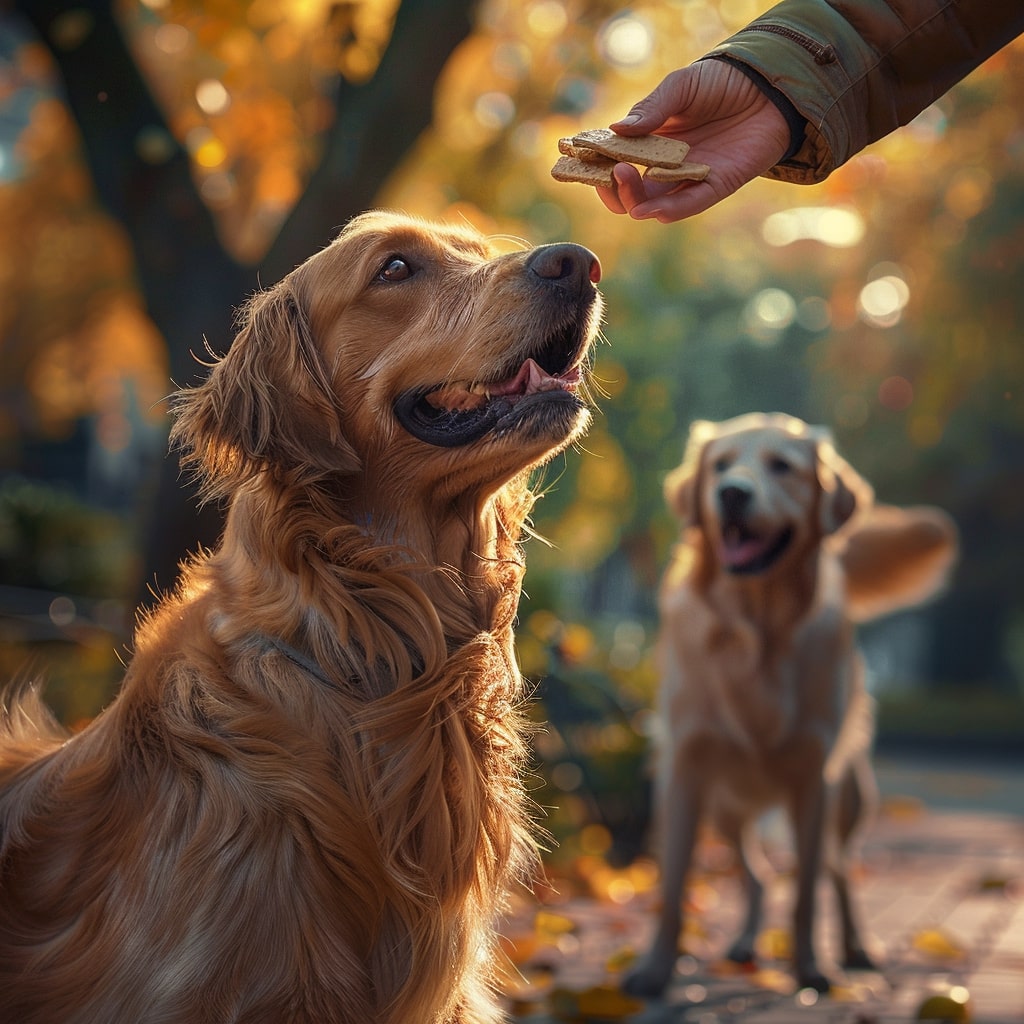
Seek Professional Help
In cases of severe or persistent aggression, it is important to seek help from a professional dog trainer or behaviorist. These experts can provide personalized guidance and develop a behavior modification plan tailored to the specific needs of the dog.
Veterinary Consultation
A sudden onset of aggression or changes in behavior can be indicative of underlying medical issues. Consulting a veterinarian can help rule out any health problems that may be contributing to the aggression. Pain management and treatment of medical conditions can significantly reduce aggressive behavior.
Preventing Canine Aggression
Prevention is always better than a cure. Here are some tips to prevent aggression in dogs.
Early Socialization
Properly socializing puppies with other dogs, animals, and humans from a young age can help prevent fear-based aggression. Positive interactions during the critical socialization period (3 to 14 weeks of age) can lead to well-adjusted and confident adult dogs.
Consistent Training
Consistent training using positive reinforcement techniques and behavior modification techniques can prevent the development of aggressive behaviors. Teaching basic commands such as “sit,” “stay,” and “come” can provide a foundation for good behavior, which is why basic obedience commands and training is very important for dogs.
Regular Exercise
Regular physical and mental exercise can prevent boredom and reduce the likelihood of aggression. Dogs that receive adequate exercise are generally happier and less prone to behavioral issues. And places like Doggy Daycare can help with enrichment with your dog.
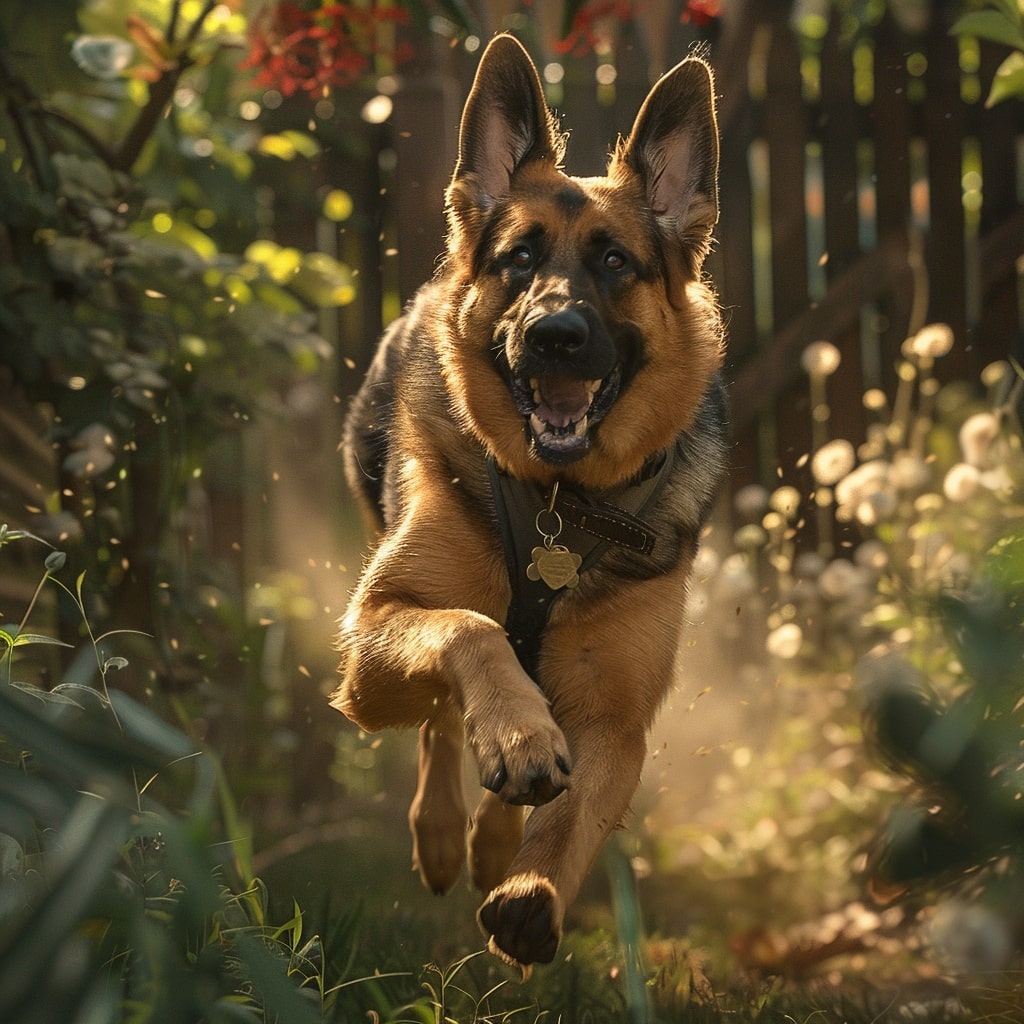
Safe Environment
Providing a safe and secure environment can prevent fear and anxiety, which are common triggers for aggression. Ensuring that the dog has a safe space to retreat to and minimizing exposure to stressful situations can help maintain a calm demeanor.
Recognizing Aggressive Behavior in Your Dog and How to Help
Recognizing and addressing aggressive behavior in dogs is essential for the safety and well-being of both the dog and those around them. By understanding the signs of aggression, identifying the underlying causes, and implementing effective management strategies, dog owners can help their pets lead happier and more harmonious lives. Always remember, seeking professional help when necessary is crucial in managing and modifying aggressive behavior in dogs. With patience, consistency, and the right approach, even the most aggressive dogs can learn to become more relaxed and friendly companions.
If you’re struggling with aggressive behavior in your dog, Performance K9 Training and Boarding can provide the expert help you need through their Aggression Rehabilitation Program. David Greene and his experienced team offer a free consultation to assess your dog’s specific needs, understanding that each case of aggression is unique. They tailor a comprehensive training approach, emphasizing obedience under distraction, to reverse learned aggressive behaviors effectively. By focusing on building a solid foundation of obedience and positive reinforcement, they aim to transform your dog into a well-mannered companion. Schedule your free consultation today to discover how Performance K9 Training and Boarding can assist in your dog’s behavioral transformation.




